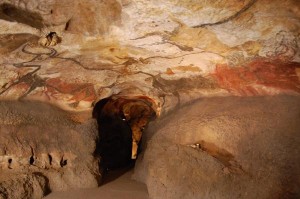I just met my film crew, Simon and Peter, in Burgundy. Steve Smith — my favorite Francophile (and co-author of my France guidebook and Manager of Tour Planning) — has joined us, too. I’m done researching guidebooks and for the next four weeks we’re making TV — four new episodes: Burgundy, great Swiss cities, Czech Republic (without Prague), and Vienna with the Danube.
 |
|
Enlarge photo |
It’s fun to get back into the TV production mode. Each day is an odyssey. Five of them add up to a 30-minute episode. Today was no exception:
This morning was market day in Beaune — I bought a big golden baguette to fit in. Locals treat their reusable shopping bag as an accessory. Lots of little dogs.
We’ll be cooking up some snails in this show — and I learned something a little disappointing about escargot. I always thought when I dragged a snail out of his shell, I was the first to do so. But no. Snails are purchased in a jar, prepared, and then stuffed into reusable shells that aren’t even theirs to be cooked. In a charcuterie you can buy them pre-stuffed with all the garlic and butter packed in…or by the jar with a pile of empty shells (although most French people have a huge supply of empties already at home).
Midday was in a medieval hill town — perfect for illustrating the administrative headquarters of a feudal lord whose church and castle came with commanding views of his domain. The population of Brancion is down to about one family — and François is both the grandfather and the mayor. When we stopped at his place for lunch, he couldn’t fathom the fact that we needed to eat quickly, then shoot.
The French keep lunch sacred. When I’m filming and push the schedule, I’m convinced they do their best to sabotage my mission to keep the work momentum going. I got frustrated as we fell behind schedule.
At Brancion’s stark and humble Romanesque church, I did a video trick I’ve always wanted to do: walk out of a serene religious space and disappear into the light (which is what you do when you expose for the inside, which causes the sky outside the door “burn out”).
Next stop: Cluny — headquarters of a chain of about a thousand monasteries that actually rivaled the Vatican as the greatest power center in Christendom back in the 11th century. We parked right in the town center, and while Simon and Peter set out to shoot, I fumbled with coins for the meter. As the meter maid walked by and saw this, she said, “J’ai fini mon travail.” (Don’t bother…I’m done working for the day.)
While Cluny’s church was once the biggest anywhere, today almost nothing is left. Great history here…but very little to actually see. That meant lots of “on-camera” presentation of information. And covering the script “on camera” means it is unchangeable later — so accuracy is critical. And it’s hard to get precise when distilling the complicated story of monastic orders into a nutshell — as we need to do for TV.
For instance, one of today’s “on-cameras” had me saying, “The abbey’s success has been attributed to a series of wise leaders or abbots. In fact, four of the first six abbots actually became saints. They didn’t answer to kings or bishops, but directly to the pope. They preached the principles of piety and the art of shrewd fundraising. Piety — they got people to stop looting the monasteries. Shrewd fundraising — they convinced Europe’s wealthy landowners to will their estates to the monasteries in return for perpetual prayers for the benefit of their needy and frightened souls.” I confirmed this with a delightful but not very scholarly local guide.
 |
|
Enlarge photo |
We wrapped up Cluny at exactly 6:00 and drove to Taizé. After all the ruined thousand-year-old monasteries, I wanted to show a contemporary monastery. Taizé (www.taize.fr) is a Christian Woodstock with thousands of young pilgrims here on retreat each week. We staked out a square meter in the vast and simple church as, like a worshipful rising tide, 3,000 young people from 100 countries flooded in. It was all Steve and I could do to hold our spot until Simon and Peter (good Biblical names for the gig) joined us.
The immense congregation sat knee-to-knee on the floor, holding candles and singing chants of praise round and round while being led in worship by fifty white-robed brothers. Looking up from my cross-legged position at the big camera atop its tripod capturing this phenomenal gathering capped the day perfectly. (More on our shooting in Burgundy in a future blog. It’s 1:00 a.m. and I’m beat.)

